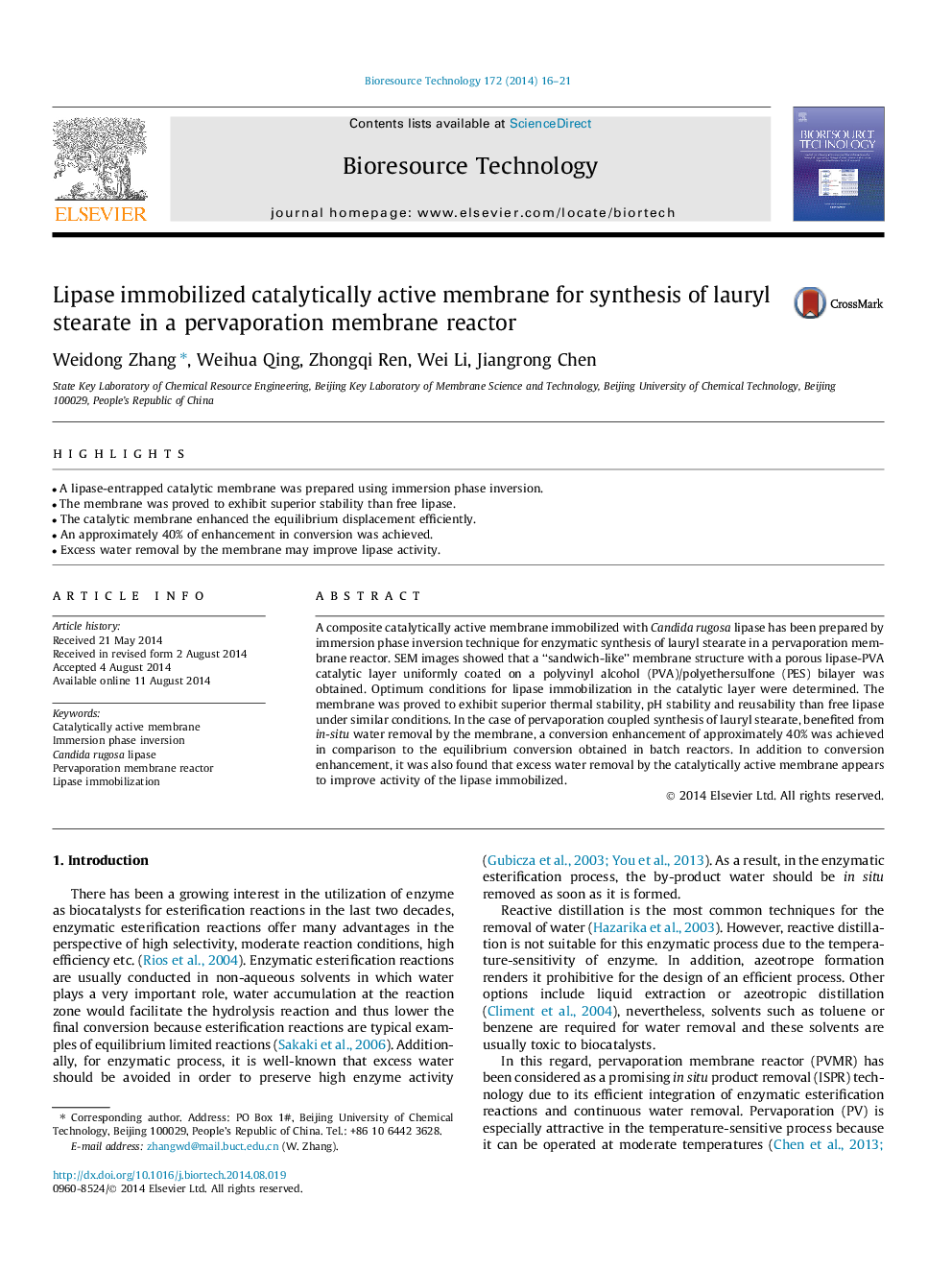| Article ID | Journal | Published Year | Pages | File Type |
|---|---|---|---|---|
| 680529 | Bioresource Technology | 2014 | 6 Pages |
Abstract
A composite catalytically active membrane immobilized with Candida rugosa lipase has been prepared by immersion phase inversion technique for enzymatic synthesis of lauryl stearate in a pervaporation membrane reactor. SEM images showed that a “sandwich-like” membrane structure with a porous lipase-PVA catalytic layer uniformly coated on a polyvinyl alcohol (PVA)/polyethersulfone (PES) bilayer was obtained. Optimum conditions for lipase immobilization in the catalytic layer were determined. The membrane was proved to exhibit superior thermal stability, pH stability and reusability than free lipase under similar conditions. In the case of pervaporation coupled synthesis of lauryl stearate, benefited from in-situ water removal by the membrane, a conversion enhancement of approximately 40% was achieved in comparison to the equilibrium conversion obtained in batch reactors. In addition to conversion enhancement, it was also found that excess water removal by the catalytically active membrane appears to improve activity of the lipase immobilized.
Keywords
Related Topics
Physical Sciences and Engineering
Chemical Engineering
Process Chemistry and Technology
Authors
Weidong Zhang, Weihua Qing, Zhongqi Ren, Wei Li, Jiangrong Chen,
